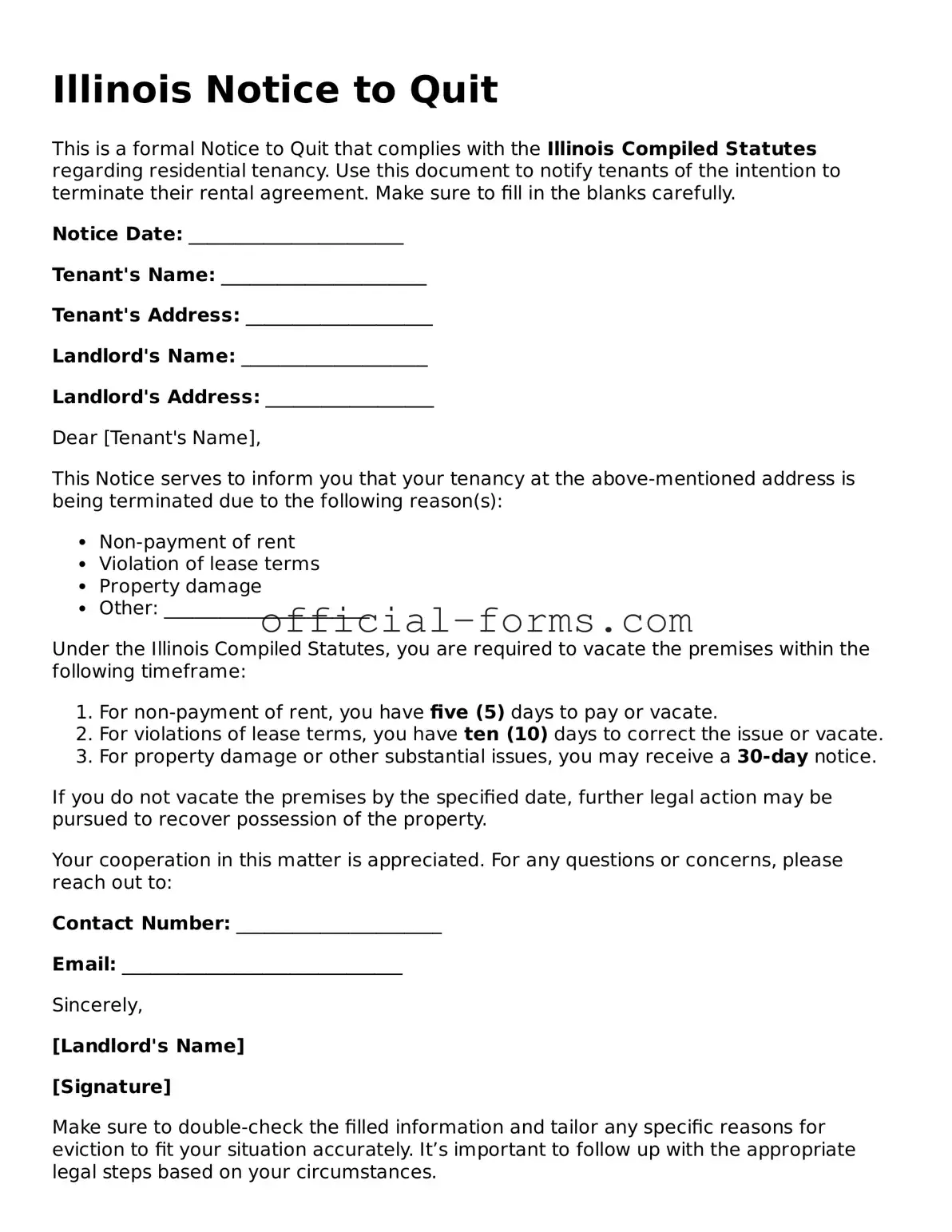Filling out the Illinois Notice to Quit form can be tricky, and many people make common mistakes. One of the biggest errors is not providing the correct date. It's essential to clearly state when the notice is being served. If the date is incorrect, it can lead to confusion and potentially delay the process.
Another frequent mistake is failing to include the tenant's full name. Using a nickname or an incomplete name can create issues. The law requires that the tenant be properly identified to ensure that they receive the notice.
Some people forget to specify the reason for the eviction. While it may seem obvious, stating the reason is crucial. Without it, the notice may be deemed insufficient, and the eviction process could be challenged in court.
Additionally, many individuals neglect to sign the form. A signature validates the notice. Without it, the document may not hold up legally, and the tenant may argue that they were never properly notified.
Another common oversight is not providing the correct address for the tenant. The address should match the one on the lease agreement. If there is a discrepancy, it could lead to complications in the eviction process.
People also sometimes forget to keep a copy of the notice for their records. This is important for future reference and can be helpful if disputes arise later. Keeping documentation can save a lot of headaches down the line.
Some individuals do not follow the proper delivery method for the notice. In Illinois, specific rules dictate how the notice must be served. Ignoring these rules can invalidate the notice and prolong the eviction process.
Finally, many overlook the timeline for serving the notice. Each type of notice has a specific time frame that must be adhered to. If the notice is served too early or too late, it may not be effective, leading to unnecessary delays.
